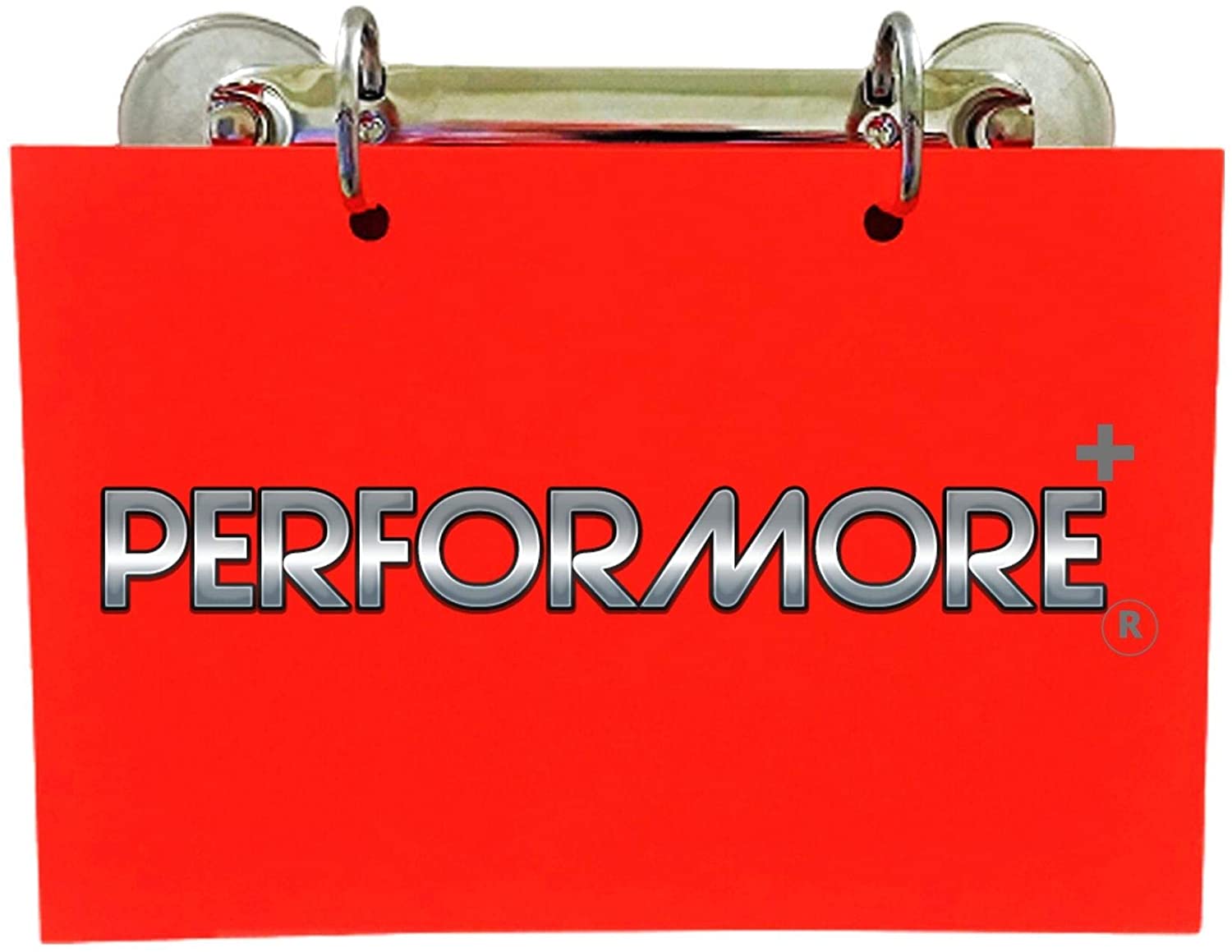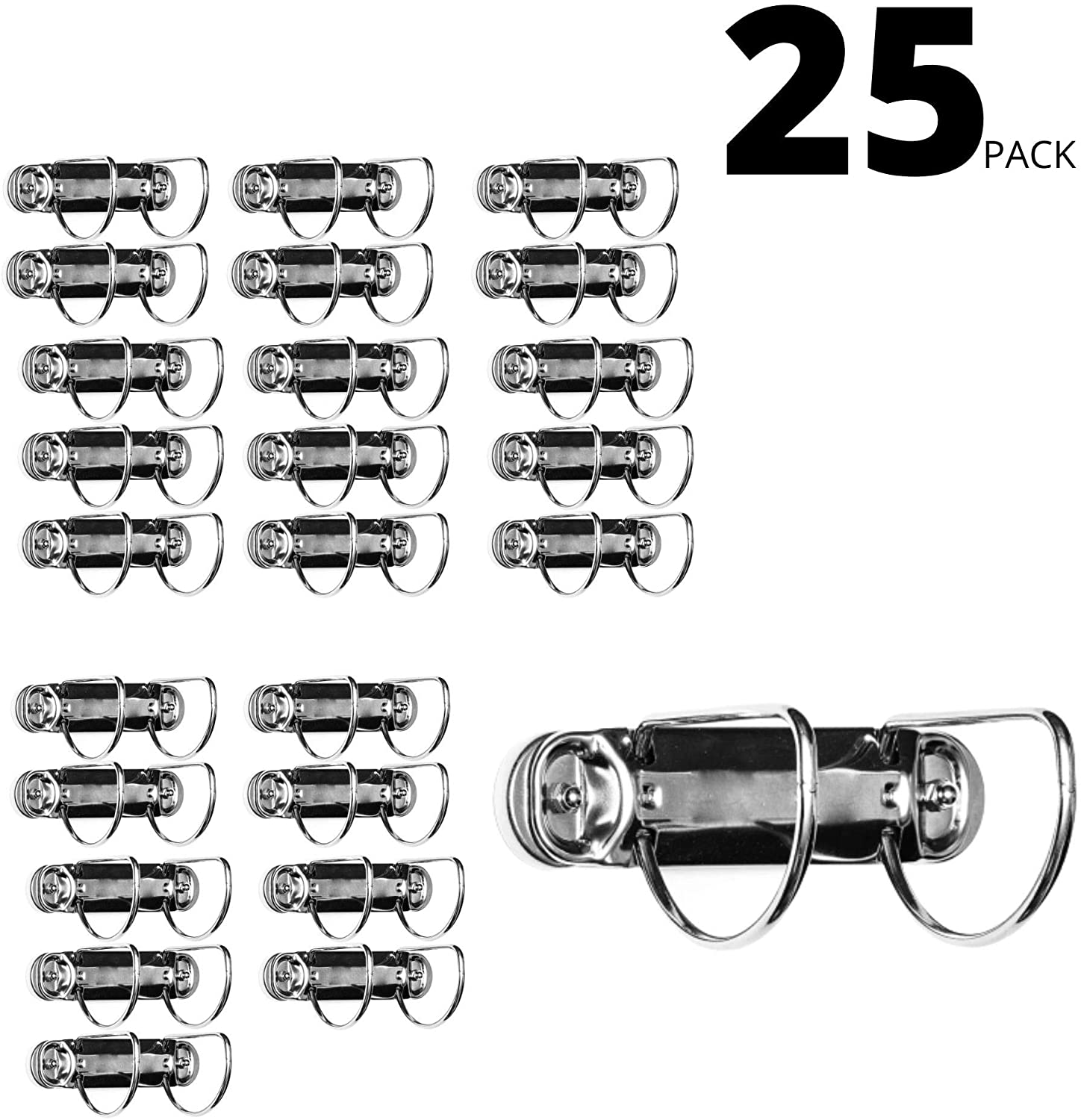Binder Mechanism
Filters
Ring Binder Depot for Quality Ring Binder Mechanisms
At Ring Binder Depot, we take pride in presenting our exclusive collection: Ring Binder Mechanism. Whether you're a seasoned professional or a DIY enthusiast, our carefully curated selection of binder mechanisms is designed to cater to your organizational needs. Dive into the world of ring binder mechanisms, where functionality meets durability, and innovation merges with tradition.Discover the Perfect Ring Binder Mechanism for Your Needs
Welcome to Ring Binder Depot's expansive selection of high quality ring binder mechanisms. We carry a huge variety of binder mechanisms to suit any application, including 2-ring and 3-ring, 4-ring, D-ring, and magnetic closures. Our mechanisms come in many different sizes, colors and durability levels. Read on to learn more about selecting the ideal ring binder component for your specific binding needs.
An Introduction to Ring Binder Mechanisms
A ring binder mechanism, sometimes called a ring metal, is the working component that allows the rings of a binder to open and close securely. Mechanisms consist of an upper and lower housing connected with hinge plates. The circular rings are split to allow entry of punched papers. Most mechanisms have levers which facilitate easy ring operation for adding and removing contents.
Ring binders are available in a range of ring counts, suited for differing capacities:
- 2-Ring Binders: Best for thin booklets and pamphlets holding less than 475 pages. The rings offer rigid alignment of contents.
- 3-Ring Binders: The most common format. Appropriate for approximately 500-650 pages. Easy to open rings to shuffle document order.
- 4-Ring Binders: Better capacity than 3-rings. Holds around 800 pages comfortably. Greater ring stability to prevent tearing.
Below we explore the major mechanism types so you can determine the best option for your specific binding purposes.
Durable Brass Mechanisms for Smooth Performance
Constructed using solid brass, our brass binder mechanisms provide unparalleled strength and longevity. The tough brass stands up well to continual opening and closing pressure without fail. Brass has natural resistance to corrosion and tarnishing. These rugged mechanisms work smoothly year after year with no need for maintenance beyond an occasional wipe down.
Brass mechanisms securely grip inserted papers to prevent slippage or alignment issues when turning pages. The smooth rings effortlessly slide to permit reorganization and additions without snagging perforated edges. Hands down, brass mechanisms deliver the very best overall user experience for frequently accessed documents like reference manuals, lab reports, financial records and client files. They lie flat when open for easy data entry too.
If premium mechanism performance is essential, opt for durable brass. It's the smart choice for frequently handled and irreplaceable documents destined for long term use.
Lightweight Magnetic Closures for Convenient Access
Ring binder mechanisms equipped with handy magnetic closures offer a convenient way to securely transport and access important papers. No need to fiddle with stubborn levers or risk uncontrolled flyaway page escapes. Ultra strong embedded magnets instantaneously seal rings closed when the binder is at rest. A quick pull on the lever breaks the magnetic bond so you can rapidly flip open rings to access the contents.
Magnetic closure mechanisms deliver noticeable user conveniences:
- Rings seal fully closed every time without monitoring
- Contents stay protected in bags or during transport
- No accidental flyaways if binder gets knocked or dropped
- Rings open effortlessly with one-handed operation
- Lightweight steel construction reduces fatigue
- Built in capacity to hold 500-800 pages
Ring binders with magnetic mechanisms strike an ideal balance of security, weight and easy access. They're a great choice for students, travelers and mobile workers needing to securely tote important documents on the go.
Get the Right Capacity for Your Needs
Ring binder mechanisms are produced in a range of sizes and ring counts to accommodate anything from thin manuals to telephone directory sized monsters. Consider these guidelines when selecting ring capacity:
2-Ring Mechanisms [H3]
Best suited for booklets around 1/8 inch thick. Appropriate uses:
- Product manuals & instructions
- Event programs & schedules
- Coil bound booklet binding
- Greeting cards & announcement inserts
- Calendars, planners & journals
Capacity: Less than 475 sheets
3-Ring Mechanisms [H3]
The most popular capacity for typical business and school papers. Appropriate uses:
- Student binders & report binding
- Project proposals & reports
- Personnel files & training manuals
- Financial records, invoices & statements
- Photo, card, stamp & coin collections
Capacity: 500-650 sheets
4-Ring Mechanisms [H3]
Added capacity for overstuffed binders that won't lie flat if pages bulge. Appropriate uses:
- Oversized documents & blueprints
- Thick reference manuals with updates
- Legal briefs & evidence binders
- Medical history files & records
- Large photo, card & document collections
Capacity: Approximately 800 sheets
With so many factors impacting ideal capacity, it can feel overwhelming to decide. Don't sweat it! Our friendly team can guide you to the perfect mechanism size and ring count for your specific binding purposes. Contact us anytime for personal recommendations and expert advice.
Your Choice, Your Way: Retail and Bulk Options
Whether you're a solo organizer or in charge of a large-scale project, Ring Binder Depot caters to your needs. Our products are available for purchase in both retail and bulk quantities. Embrace flexibility and convenience as you navigate your organizational journey.
Match Binders & Mechanisms to Prevent Damage
To prevent premature binder damage, the mechanism capacity should approximately match the size of cover’s housing contents. Stuffing a heavy load of papers into an undersized binder stresses the riveting and places excessive strain on hinge plates. Consequently, the mechanism eventually fails and pages fly everywhere.
Follow these matching tips:
- Use 2-ring mechanisms in 1/2 inch or smaller binders
- 3-ring mechanisms fit up to 1-1/2 inch binders
- 4-ring mechanisms require 2 inch or larger covers
Ideally, packed binder contents should fill around 2/3 of capacity without bulging or affecting the flat design most users prefer for readability. This approach provides room to add more materials over time without overload fears.
Unsure about proper binder sizing? Contact us to receive fitting recommendations from our binding experts.
Shop with confidence knowing our mechanisms are built to provide a lifetime of peak performance with proper binder matching. Want to learn more about our quality assurance promises? Reach out anytime!
Need help?


